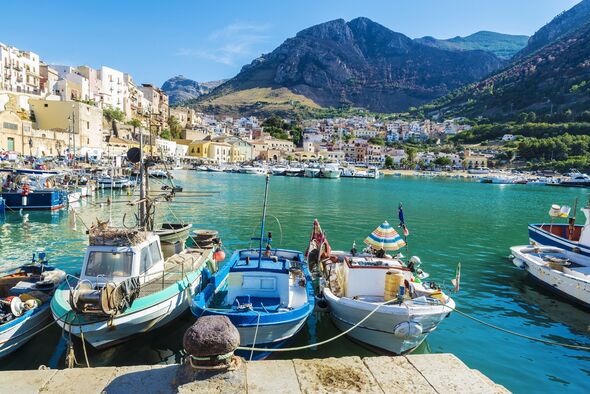Italy is in a state of alarm as Sicily, one of its most beloved holiday destinations, grapples with a severe drought.
The Italian government declared a state of emergency for the southern island in early May, releasing funds to acquire water tankers, drill wells, and renovate pumping and desalination stations.
However, months of relentless high temperatures have worsened the already dire conditions, leaving farmers devastated and tourists facing a changed landscape.
Sicilian farmer Salvatore Michele Amico, near San Cataldo in the island’s dry interior, told The Local: “There’s no hope because it hasn’t rained since May last year.
“All the planted fields have been lost: there is no wheat, no barley, no oats.”
The parched land, devoid of vegetation, now cracks under the sun’s relentless heat.
Rivers, ponds, and watering holes have dried up, farming equipment sits idle, and cattle wander aimlessly in search of sustenance.
Historically the breadbasket of ancient Rome, Sicily is projected to see its wheat harvest collapse by more than 50 percent this year, according to agricultural lobby Coldiretti.
Beppe Palmieri, another farmer whose land once supported cattle, goats, and fields of grain, added: “It didn’t rain this year, so we haven’t harvested anything, and we can’t feed or water the animals.”
Efforts are being made to bring in feed from outside the region, but the water shortage remains “critical.”
The drought’s impact extends beyond crops, affecting fruit trees, vineyards, and olive groves, with total damages estimated at over €2.7 billion (“.3 billion).
The drought threatens livestock, grain fields, fruit trees, and vineyards, posing a serious threat to the region’s agricultural heritage.
Compounding the crisis, wildfires have consumed 5,800 hectares (14,300 acres) of agricultural land since the beginning of July.
Coldiretti attributes part of the problem to insufficient investment in infrastructure to prevent water waste.
According to Italy’s National Institute of Statistics (Istat), Sicily has one of the country’s highest rates of wasted drinking water, with 51.6 percent lost from distribution networks in 2022.
This inefficiency results in 157 liters of water lost per person daily, worsening the drought’s impact.
